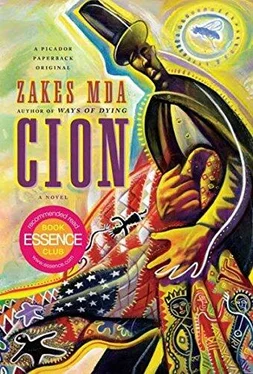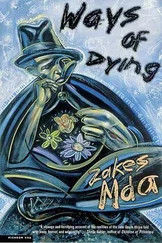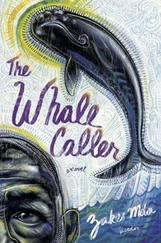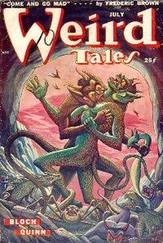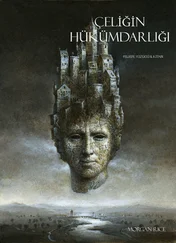On a typical day we woke up at dawn and Orpah went back to her house for her ablutions. I took a shower in our RV. I call it “our RV” because Orpah had practically moved in with me. But she preferred a bath so she went to her house for that. After about two hours or so she came back all spruced up, bejeweled in her colorful plastic and smelling of some cheap perfume. After a quick breakfast of cereal we set off to Niall Quigley’s grave for our daily dose of mourning.
Orpah took charge and choreographed our routine. She decreed that we should have tattoos of teardrops on our cheeks. One drop for me would suffice, but for her she needed two drops on each cheek since she had not mastered the art of shedding floods of tears at will. We went to a tattoo parlor in Athens especially for this.
Orpah saw herself as the manager and artistic director of this whole enterprise. She went through the opening sequences of our mourning many times over. As part of the opening routine she appropriated Obed’s speech — the one he made at the funeral of Sister Naomi’s boy about the ineptness of human beings in handling grief and the necessity of professional mourning in bringing back aplomb and dignity to the art of grieving.
I was well aware that in our itinerant mourning people would resist at first. But soon they would be taken in by the novelty of it all, and by the swooping performances that Orpah was choreographing. After all, I was able to mourn professionally in South Africa where the philosophy of ubuntu, which espoused the universal bond of sharing that connected all humanity, would have looked askance at anyone who was demanding payment for mourning. I made a good living from the bountiful deaths of South Africa because of that novelty factor. None of the ethnic groups there ever had professional mourners in their culture, for that would have been against the very notions of ubuntu, where in its practice you hoe your neighbor’s field for no pay because next time the neighbor will hoe your field for no pay. It is like that in death as well: I mourn for my neighbor because when I die my neighbor will mourn for me. Yet when I came and introduced professional mourning some people took it up with gusto. My presence at a funeral became a status symbol. Of course there were those who saw me as a nuisance and drove me away from their funerals and pelted me out of the cemeteries with dead wreaths from neighboring graves. This happened a lot with funerals of the wealthy. The poor often welcomed me, shared their mourning and their food and paid me generously at the end.
It will be the same when we tour the country with Orpah mourning the deaths of Americans.
Although Orpah was eager to test our routine at live funerals right away, I thought it was important for us to search for other mourners and learn a few tricks that we could incorporate into our own mourning. Hooking up with other mourners would also give us legitimacy in the communities.
“Where you gonna find other mourners?” Orpah asked. “There ain’t no professional mourners in America.”
After nagging him about the location of Virginia mourners the sciolist came to my rescue and gave me a starting point. I found on my bed one day when I returned from the Center a letter that the sciolist received from a professor who had read Ways of Dying, which, as I believe you know by now, is the story of my life as conceived and recorded by the same sciolist. The professor, William Edwards, wrote:
Regarding the information on mourners I can say that all of it is anecdotal (much in the oral tradition). My cousin, from NY, has been visiting over the holidays and she recalls in New York City knowing of mourners. A colleague of mine from Louisiana also recalls mourners there. The same is true for close friends who are from South Carolina. I can convey that mourners were exclusively female. They were most likely to appear at funerals of those in the lower (economic) and working classes. It was highly unlikely that they would appear for funerals of the middle class. In Louisiana mourners could be found at Catholic funerals. Most commonly they were phenomena of the Protestant churches, especially those that were given over to more emotional worship. Mourners may or may not have been friends of the family. The women mourners’ role was to ensure that the deceased received a due amount of respect through the expression of outward and vocal grief. The expression of grief would most commonly be crying with an occasional uttering of some quality about the deceased (“He was a good man/woman”).
As a sociologist I would interpret mourning as ceremonial rituals performed to anoint the deceased with respect which he/she may not have received in their lifetime. This is similar to Sunday worship where blacks would have special clothing to wear which would symbolize dignity and worthiness in God’s eyes. Duke Ellington captured some of this in his famous song “Come Sunday.” Given this interpretation you can surmise why mourning was more likely to occur in the lower class ranks than among the middle class. Mourning was a kind of legitimation, as noted earlier. It signified the fact that an individual had a worth which may not have been acknowledged in the ordinary patterns of social relations. In the South it was common for people to think of dying as “passing over” into the promised land. This can be seen in many of the “Negro Spirituals.” Mourning served as a transitional act whereby the deceased would be given a “proper” send-off.
There are some aspects of mourning that I am not sure about. Did mourners receive any pay? Were they invited by the family of the deceased? Could anyone be a mourner? I can understand why most were women since they, traditionally, have been more expressive than men. Their crying at a funeral would seem most appropriate.
The points that the professor raised in this last paragraph were the most important for me. I did not think we could just gatecrash a funeral and start mourning. We might need to scour obituaries, meet the bereaved and convince them that they needed us. Payment plays an important part in the practice of professional mourning. It is what elevates professional mourning from downright pedestrian mourning. We would have to convince the bereaved of this. Plus, my reserve of funds would not last forever.
As for the observation that women were more expressive, in our case I was the most expressive. After all, I perfected the art of mourning over the years. Orpah’s expressiveness came through her sitar and the quilts that we hung on rails next to Niall Quigley’s grave.
Although the quilts were sewn by me they were an interpretation of her designs. Sometimes we worked on them together at the Center. I sewed bits of discarded cloths together and she decided where the found objects — such as shells and beads and mirrors — should be placed in the collage. Those objects that could not be sewn were glued on. The shape of the ghost orchid was the theme that ran through the quilts.
“You are truly a fabric poet, Orpah,” I told her once.
The quilts, the sitar and my wails and moans gave color to our mourning. The fabrics were bright and dazzling and the mirrors and gleaming metals captured our souls and reflected them back to us. Her sitar also had a wide range of tone colors. Despite the fact that she changed her tunes in line with the sounds of my own invention, her strumming did not lose its sense of wonder and mystery.
As our joint creations developed I resuscitated the skill I thought I had lost as a child — that of drawing pictures. I remembered vaguely winning an art prize at elementary school. I also remembered the discouragement I received from my father, who ironically had extended his blacksmithing into fashioning metal figurines of creatures who visited his dreams. Here, with the influence of Orpah’s sitar, I was steadily contributing stylized human figures to her designs. And our work was an expression of joy. Joy that was not dressed with anything to make it valid. Naked joy.
Читать дальше
